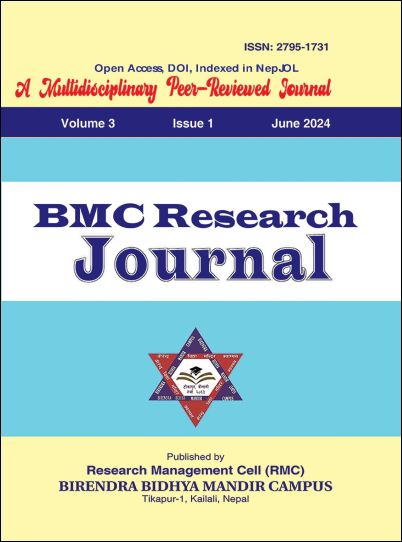A Performance Reading: Exploration of Language and Sign of the Tibetan Lama in Kipling’s Kim
DOI:
https://doi.org/10.3126/bmcrj.v3i1.69171Keywords:
Illusion, Language, Performance, River of the arrow, Symbol, Wheel of lifeAbstract
This paper explores how the language and sign of the Tibetan lama play a performative role in creating the meaning in Rudyard Kipling's Kim (1901). His language and symbols become meaningful when it comes to the interaction among people. Then, his language vibrates theatrically that he has been far away from the wheel of life (birth, death, and rebirth) after finding the river of arrows. His artistic and creative language of his performs the dynamic meaning. Furthermore, he becomes connected with the people with his dingy woolen stuff, the bowl unsolicited gift, and the belt with wooden beads and they construct the concept of meaning. His language and symbols produce the idea and people grasp it. Then, the researcher uses Dwight Conquargood’s concept of performative art to analyze the lama’s language and symbols which play the performative role in creating the meaning. Thus, his language and signs give the metaphysical concept of meaning and they generate systematic constructive performance in his life.
Downloads
Downloads
Published
How to Cite
Issue
Section
License
Copyright (c) 2024 The Author(s)

This work is licensed under a Creative Commons Attribution-NonCommercial 4.0 International License.
This license enables reusers to distribute, remix, adapt, and build upon the material in any medium or format for noncommercial purposes only, and only so long as attribution is given to the creator.




